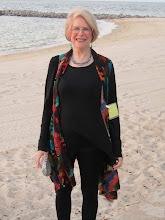While India is a secular republic, most of its citizenship practice some form of religion. 80% are practicing Hindu's, 13% make up the Muslim population, Christians about 2.5%, Sikh's about 2%, Jain's 0.5%, and Buddhist's 0.7%. The Muslim population is the 2nd largest in the world after Indonesia. Zoroastrians and Jews are numbered in the thousands and are tiny minorities. India has always had a religious tolerance policy and for the most part everyone seems to get along. You cannot walk or drive anywhere without spying a temple or mosque. The Hindu pantheon has thousands of deities to which small shrines are dedicated. Priests have full time and hereditary jobs of ministering to the many gods and goddesses. If they drove better they might not need so many!
The caste system in India is a hot political point. It goes way back. There are 4 main groups: Brahmins (warriors, merchants, and priests), Kshatryas (rulers, nobles, and warriors), Vaishyas (bankers and buisnessmen), Shudras (artisans and laborers) , and the untouchables, now called Dalits. It is predominantly a Hindu practice. One's last name usually signifies what region you come from and what caste you are from. Movement out is difficult. One way around is to convert to another religion such as Buddhism, or as someone suggested (sorry, I didn't pay enough attention to catch his name).... change your name! While caste barriers have mostly broken down in the large cities, they still persist in the rural areas of the country where 72% of the population resides. The barriers mostly refer to job opportunities, education, and politics. They are still very much seen in the social fabric of India.
Subscribe to:
Post Comments (Atom)







No comments:
Post a Comment